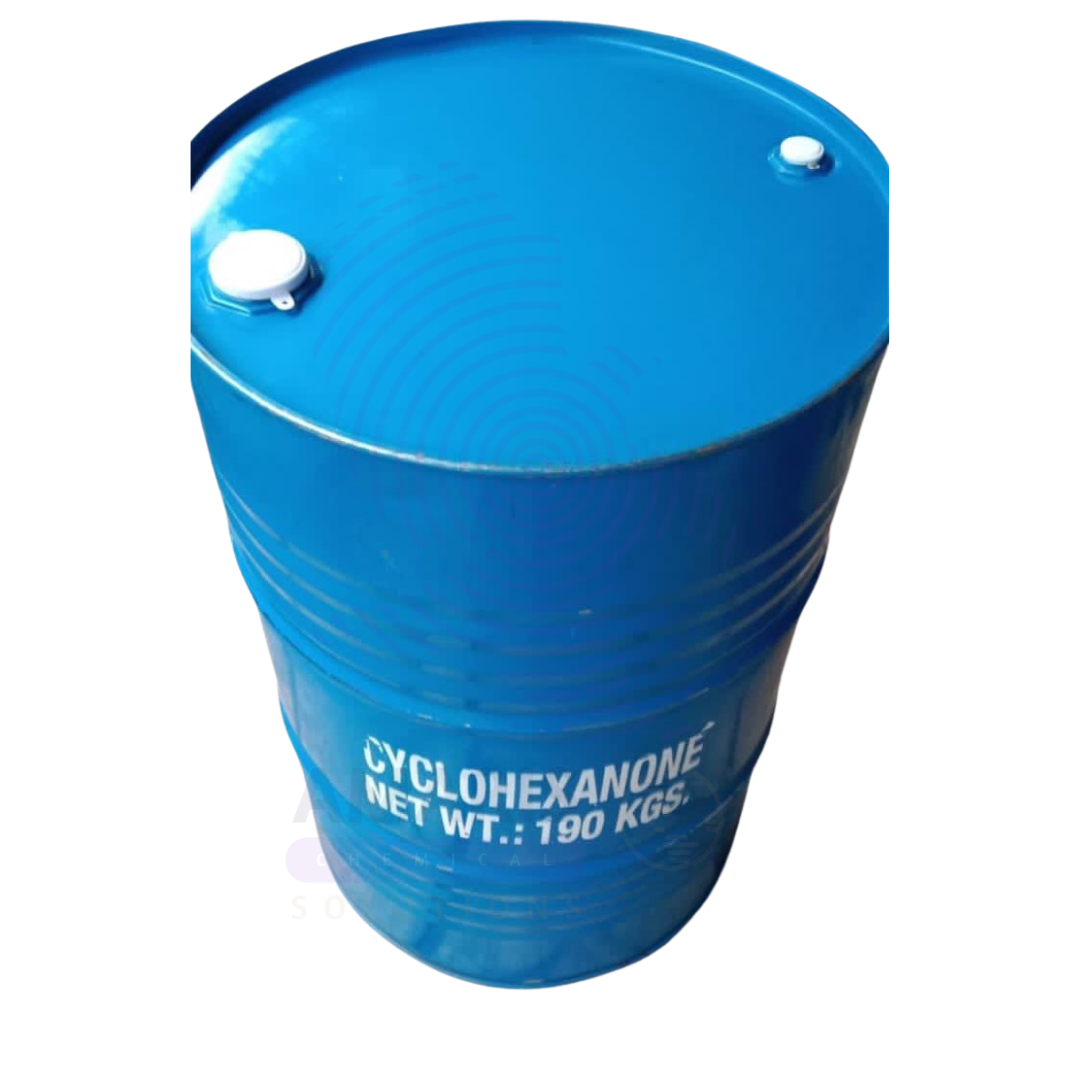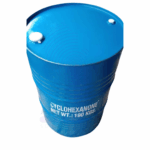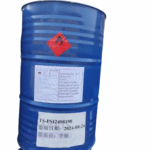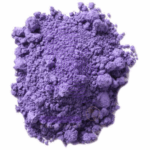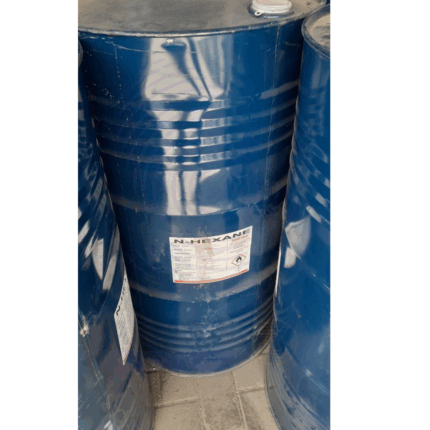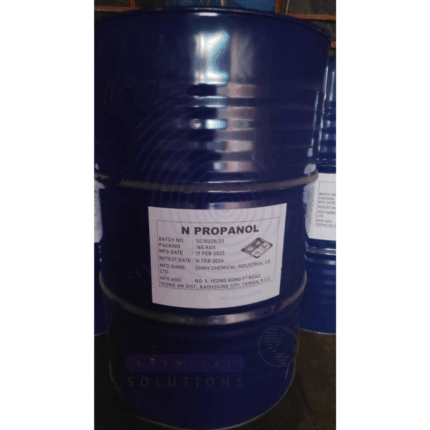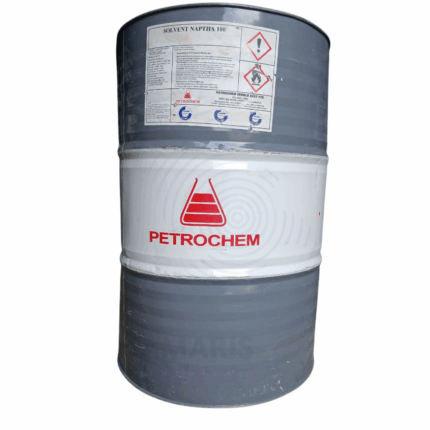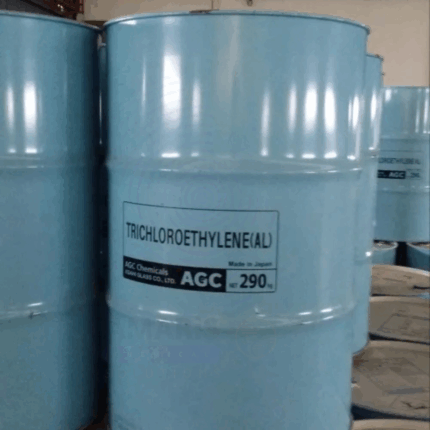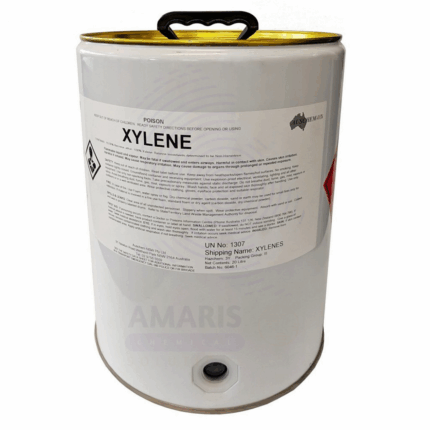
Combustion Boat
$ 8.20 Original price was: $ 8.20.$ 8.09Current price is: $ 8.09.
Cyclohexanone
Whatsapp Order
Cyclohexanone is a clear, colorless to pale yellow liquid with a sharp, sweet, acetone-like odor. It is a cyclic ketone with the molecular formula C₆H₁₀O and a moderately high boiling point. Cyclohexanone is a key intermediate in the chemical industry, primarily used in the manufacture of nylon, pharmaceuticals, and agrochemicals. Its excellent solvency and chemical reactivity make it valuable for a wide range of industrial applications, including solvent use and chemical synthesis.
Description
Table of Contents
Toggle
Cyclohexanone
Primary Uses
- Chemical Intermediate
- Primarily used as a precursor in the production of adipic acid and caprolactam, which are essential monomers for nylon-6 and nylon-66 manufacture.
- Serves as a key intermediate in the synthesis of pharmaceuticals, agrochemicals, and plasticizers.
- Solvent Applications
- Utilized as a solvent for resins, paints, coatings, adhesives, and inks due to its ability to dissolve a wide variety of organic compounds.
- Employed in cleaning and degreasing metal parts and surfaces in industrial settings.
- Laboratory and Industrial Chemistry
- Used as a reagent and solvent in organic synthesis and chemical research.
- Acts as a medium for chemical reactions including condensations and reductions.
Secondary Uses
- Flavor and Fragrance Industry
- Used as a minor component or intermediate in the synthesis of certain fragrances and flavor compounds.
- Electronics Industry
- Utilized for cleaning circuit boards and electronic components due to its good solvency and volatility.
- Polymer and Coatings Industry
- Used in the formulation of specialty coatings, lacquers, and polymer blends.
KEY PRODUCT FEATURES
1. Basic Identification Attributes
- Chemical Name (IUPAC): Cyclohexanone
- Common/Trade Name: Cyclohexanone
- CAS Number: 108-94-1
- HS Code: 2914.11.00
- Molecular Formula: C₆H₁₀O
- Synonyms:
- Oxocyclohexane
- Cyclohexyl ketone
2. Physical & Chemical Properties
- Physical State: Liquid
- Color & Odor: Colorless to pale yellow; sharp, sweet, acetone-like odor
- Melting Point: -31°C
- Boiling Point: 155.6°C
- Density: 0.946 g/cm³ at 20°C
- Solubility:
- Slightly soluble in water (~23 g/L at 20°C)
- Miscible with most organic solvents such as ethanol, ether, acetone, and benzene
- Vapor Pressure: Approx. 8.5 mmHg at 20°C
- Flash Point: 41°C (closed cup)
- Stability: Stable under normal conditions but can form peroxides upon prolonged exposure to air and light
3. Safety & Hazard Attributes
- Hazard Class (GHS): Flammable liquid, irritant, harmful if swallowed or inhaled
- NFPA Ratings:
- Health: 2
- Flammability: 3
- Reactivity: 0
- Exposure Limits: OSHA PEL = 50 ppm (8-hour TWA)
- Toxicity: Can cause irritation to eyes, skin, and respiratory system; central nervous system depressant at high exposure levels
- Reactivity: Reacts with strong oxidizers; forms peroxides on prolonged air exposure
4. Storage & Handling Attributes
- Storage Conditions: Store in tightly closed containers in a cool, dry, well-ventilated area away from ignition sources and strong oxidizers.
- Container Type: Metal or glass containers with vapor-tight seals.
- Shelf Life: Typically 1-2 years if stored properly.
- Special Handling: Use explosion-proof equipment; avoid open flames, sparks, or static discharge; handle in fume hoods or well-ventilated areas with PPE.
5. Regulatory & Compliance Attributes
- FDA Status: Not approved for direct food contact; regulated as a hazardous chemical.
- REACH Status: Registered and regulated under EU chemical safety laws.
- Transportation: Classified as a flammable liquid (Class 3) for transport; requires proper labeling and packaging.
- Waste Disposal: Dispose of according to local hazardous waste regulations; avoid environmental contamination.
6. Environmental & Health Impact
- Ecotoxicity: Harmful to aquatic organisms; avoid discharge into water bodies.
- Persistence: Biodegradable under aerobic conditions but may persist in anaerobic environments.
- Bioaccumulation: Low potential for bioaccumulation.
- Carcinogenicity/Mutagenicity: Not classified as carcinogenic; data on mutagenicity inconclusive.
- Biodegradability: Readily biodegradable under aerobic conditions.
SAFETY HANDLING PRECAUTIONS
Safety Handling Precautions
Personal Protective Equipment (PPE):
- Chemical-resistant gloves
- Safety goggles or face shield
- Protective clothing
- Respirator or mask in poorly ventilated areas
Handling Measures:
- Avoid inhalation of vapors and skin contact
- Use in well-ventilated areas or under fume hoods
- Ground and bond containers to prevent static discharge
Storage Measures:
- Store away from heat, sparks, open flames
- Keep containers sealed when not in use
Hygiene Practices:
- Wash hands and exposed skin after handling
- Do not eat, drink, or smoke in work areas
First Aid Measures
- Inhalation: Move affected person to fresh air immediately; provide oxygen if breathing is difficult; seek medical attention.
- Skin Contact: Remove contaminated clothing; wash skin with soap and water; seek medical advice if irritation persists.
- Eye Contact: Rinse eyes with plenty of water for at least 15 minutes; seek immediate medical attention.
- Ingestion: Do not induce vomiting; rinse mouth with water; seek emergency medical care immediately.
Firefighting Measures
- Fire Hazards: Highly flammable liquid and vapor; vapors may form explosive mixtures with air.
- Extinguishing Media: Use alcohol-resistant foam, dry chemical, carbon dioxide, or water spray.
- Special Precautions: Firefighters should wear full protective gear and self-contained breathing apparatus.
- Decomposition Products: Carbon monoxide, carbon dioxide, and other toxic fumes may form upon combustion.
Related products
Butyl Glycol
Butyl Glycol, also known as 2-Butoxyethanol, is a colorless to pale yellow liquid with a mild, sweet ether-like odor. It is an organic solvent classified as a glycol ether, with the molecular formula C6H14O2. Butyl Glycol is highly miscible with water, alcohols, and many organic solvents. It is widely used in industrial and commercial applications due to its excellent solvent properties, low volatility, and moderate toxicity. Its high solvency and compatibility with both aqueous and organic phases make it valuable in coatings, cleaning products, inks, and adhesives.
Kerol
Kerol is a synthetic kerosene-like solvent commonly used as a degreasing and cleaning agent in various industrial applications. It is a clear, colorless liquid with low aromatic content, moderate volatility, and excellent solvency properties, designed for effective removal of oils, greases, and contaminants from metal and mechanical parts. Kerol offers a balance of strong cleaning efficiency with improved safety and environmental profile compared to traditional kerosene.
Normal Hexane
Normal Hexane is a colorless, highly flammable liquid hydrocarbon with the chemical formula C6H14. It belongs to the aliphatic hydrocarbon family and is primarily used as a solvent due to its excellent ability to dissolve oils, fats, and various organic compounds. It has a low boiling point and evaporates quickly, making it ideal for industrial and laboratory applications.
Prop BH N Propanol Technical Grade
Prop BH N Propanol Technical Grade, is a clear, colorless, flammable liquid alcohol used widely as a solvent and intermediate in chemical manufacturing. It has strong solvency properties for oils, resins, and various organic compounds. Due to its moderate evaporation rate and compatibility with water and other solvents, it is valuable in coatings, pharmaceuticals, and industrial cleaning formulations.
Solvent Naphtha
Solvent Naphtha is a flammable, volatile hydrocarbon mixture derived from petroleum distillation. Characterized by its sharp, petroleum-like odor, it is a clear, colorless to pale yellow liquid. It is a versatile industrial solvent prized for its ability to dissolve oils, fats, resins, and rubber. Its balanced evaporation rate and strong solvency make it a key component in formulations requiring a powerful yet controllable solvent.
Toluene
Toluene is a clear, colorless aromatic hydrocarbon solvent with a distinct sweet odor. It is widely used as an industrial solvent and chemical feedstock due to its excellent solvency, volatility, and chemical stability. Toluene plays a critical role in the production of paints, coatings, adhesives, rubber, and various chemicals. It is also used as a fuel additive and in the manufacture of explosives and pharmaceuticals. Its versatility makes it a cornerstone in multiple industrial sectors.
Trichloroethylene
Trichloroethylene (TCE) is a clear, non-flammable chlorinated solvent with a sweet, chloroform-like odor. It is widely used as an industrial solvent for degreasing and cleaning metal parts, thanks to its excellent ability to dissolve oils, greases, and waxes. Trichloroethylene is also used as a chemical intermediate and in the manufacture of adhesives, paints, and coatings. Its volatility and solvency make it essential in many manufacturing and maintenance processes, although use is regulated due to environmental and health concerns.
Xylene
Xylene is a clear, colorless, flammable aromatic hydrocarbon solvent consisting of three isomers: ortho-, meta-, and para-xylene. It is widely utilized in various industries for its excellent solvency, chemical stability, and moderate evaporation rate. Xylene serves as a key raw material in chemical manufacturing and an effective solvent in coatings, adhesives, inks, and cleaning applications.


 Preservatives(food)
Preservatives(food) Flavor Enhancers
Flavor Enhancers Acidulants
Acidulants Sweeteners
Sweeteners Antioxidants
Antioxidants Colorants(food)
Colorants(food) Nutraceutical Ingredients (food)
Nutraceutical Ingredients (food) Nutrient Supplements
Nutrient Supplements Emulsifiers
Emulsifiers
 Collectors
Collectors Dust Suppressants
Dust Suppressants Explosives and Blasting Agents
Explosives and Blasting Agents Flocculants and Coagulants
Flocculants and Coagulants Frothers
Frothers Leaching Agents
Leaching Agents pH Modifiers
pH Modifiers Precious Metal Extraction Agents
Precious Metal Extraction Agents
 Antioxidants(plastic)
Antioxidants(plastic) Colorants (Pigments, Dyes)
Colorants (Pigments, Dyes) Fillers and Reinforcements
Fillers and Reinforcements Flame Retardants
Flame Retardants Monomers
Monomers Plasticizers
Plasticizers Polymerization Initiators
Polymerization Initiators Stabilizers (UV, Heat)
Stabilizers (UV, Heat)
 Antifoaming Agents
Antifoaming Agents Chelating Agents
Chelating Agents Coagulants and Flocculants
Coagulants and Flocculants Corrosion Inhibitors
Corrosion Inhibitors Disinfectants and Biocides
Disinfectants and Biocides Oxidizing Agents
Oxidizing Agents pH Adjusters
pH Adjusters Scale Inhibitors( water)
Scale Inhibitors( water)
 Antioxidants(cosmetic)
Antioxidants(cosmetic) Emollients
Emollients Fragrances and Essential Oils
Fragrances and Essential Oils Humectants
Humectants Preservatives
Preservatives Surfactants(cosmetic)
Surfactants(cosmetic) Thickeners
Thickeners UV Filters
UV Filters
 Fertilizers
Fertilizers Soil Conditioners
Soil Conditioners Plant Growth Regulators
Plant Growth Regulators Animal Feed Additives
Animal Feed Additives Biostimulants
Biostimulants Pesticides (Herbicides, Insecticides, Fungicides)
Pesticides (Herbicides, Insecticides, Fungicides)
 Active Pharmaceutical Ingredients (APIs)
Active Pharmaceutical Ingredients (APIs) Excipients
Excipients Solvents(pharmaceutical)
Solvents(pharmaceutical) Antibiotics
Antibiotics Antiseptics and Disinfectants
Antiseptics and Disinfectants Vaccine Adjuvants
Vaccine Adjuvants Nutraceutical Ingredients (pharmaceutical)
Nutraceutical Ingredients (pharmaceutical) Analgesics & Antipyretics
Analgesics & Antipyretics
 Analytical Reagents
Analytical Reagents Solvents(lab)
Solvents(lab) Chromatography Chemicals
Chromatography Chemicals Spectroscopy Reagents
Spectroscopy Reagents microbiology-and-cell-culture-reagents
microbiology-and-cell-culture-reagents Molecular Biology Reagents
Molecular Biology Reagents Biochemical Reagents
Biochemical Reagents Inorganic and Organic Standards
Inorganic and Organic Standards Laboratory Safety Chemicals
Laboratory Safety Chemicals Specialty Laboratory Chemicals(Special Laboratory Equipment)
Specialty Laboratory Chemicals(Special Laboratory Equipment)
 Demulsifiers
Demulsifiers Hydraulic Fracturing Fluids
Hydraulic Fracturing Fluids Scale Inhibitors(oil)
Scale Inhibitors(oil) Surfactants(oil)
Surfactants(oil) Drilling Fluids
Drilling Fluids
 Dyes and Pigments
Dyes and Pigments Bleaching Agents
Bleaching Agents Softening Agents
Softening Agents Finishing Agents
Finishing Agents Antistatic Agents
Antistatic Agents
 Admixtures
Admixtures Waterproofing Agents
Waterproofing Agents Sealants and Adhesives
Sealants and Adhesives Curing Compounds
Curing Compounds Concrete Repair Chemicals
Concrete Repair Chemicals Anti-Corrosion Coatings
Anti-Corrosion Coatings
 Surfactants(cleaning)
Surfactants(cleaning) Builders
Builders Enzymes
Enzymes Solvents (Cleaning)
Solvents (Cleaning) Fragrances
Fragrances
 Electronic Chemicals
Electronic Chemicals Catalysts
Catalysts Lubricants
Lubricants Photographic Chemicals
Photographic Chemicals Refrigerants
Refrigerants Automotive chemicals
Automotive chemicals Pyrotechnic Chemicals
Pyrotechnic Chemicals
 Biodegradable Surfactants
Biodegradable Surfactants Bio-based Solvents
Bio-based Solvents Renewable Polymers
Renewable Polymers Carbon Capture Chemicals
Carbon Capture Chemicals Wastewater Treatment Chemicals
Wastewater Treatment Chemicals
 Pigments
Pigments Solvents(paint)
Solvents(paint) Specialty Coatings
Specialty Coatings Binders/Resins
Binders/Resins Additives
Additives Driers
Driers Anti-Corrosion Agents
Anti-Corrosion Agents Functional Coatings
Functional Coatings Application-Specific Coatings
Application-Specific Coatings
 Fresh Herbs
Fresh Herbs Ground Spices
Ground Spices Whole Spices
Whole Spices Spice Blends
Spice Blends Dried Herbs
Dried Herbs
 Leavening Agents
Leavening Agents Dough Conditioners
Dough Conditioners Flour Treatments
Flour Treatments Fat Replacers
Fat Replacers Decoratives
Decoratives Preservatives(baking)
Preservatives(baking)
 Plasticizers & Softeners
Plasticizers & Softeners Reinforcing Agents
Reinforcing Agents Adhesion Promoters
Adhesion Promoters Vulcanizing Agents
Vulcanizing Agents Antidegradants
Antidegradants Blowing Agents
Blowing Agents Fillers & Extenders
Fillers & Extenders Accelerators & Retarders
Accelerators & Retarders